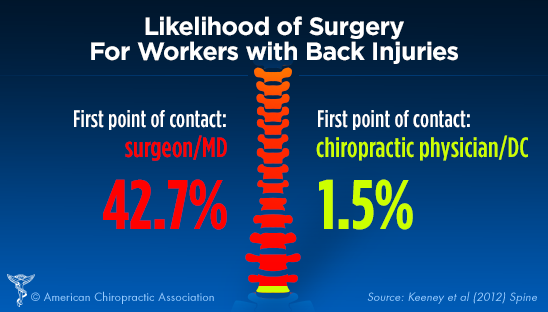Back Pain As An Indication Of Health: Typical Disorders And Their Symptoms Explained
Back Pain As An Indication Of Health: Typical Disorders And Their Symptoms Explained
Blog Article
Developed By-Keller Sherrill
If you're experiencing back pain, your body could be attempting to tell you something greater than simply discomfort. The way your back feels can supply useful ideas about your total well-being. Recognizing the certain kind of pain you're feeling and any type of accompanying signs is crucial to unraveling the mystery behind your pain. Let's explore holistic doctors austin and symptoms connected with various sorts of pain in the back to shed light on what your body may be signaling.
Types of Back Pain
When it comes to pain in the back, there are various types that you may experience. One common type is muscle discomfort, typically triggered by overuse, pressure, or injury to the muscles and ligaments supporting the back. Read the Full Content of discomfort can vary from moderate pain to extreme and devastating pain.
Another type is nerve pain, which can result from conditions like herniated discs or sciatica. Nerve discomfort frequently offers as a sharp, shooting feeling that emits down the leg.
Joint pain in the back can originate from issues like arthritis or sacroiliac joint disorder. This kind of discomfort is commonly really felt in the reduced back and can be worsened by specific movements.
In addition, neck and back pain can be associated with architectural issues such as back stenosis or vertebral cracks. Comprehending the type of neck and back pain you're experiencing is crucial in identifying the suitable treatment and management approaches.
Common Effects to Expect
Moving beyond the various types of pain in the back, it is necessary to identify the common symptoms that can indicate underlying issues.
Relentless pain in the back that worsens with motion or during the night can show a more severe problem. Feeling numb or tingling in the legs or feet, especially when accompanied by weakness, could indicate a nerve-related concern. If you experience unexpected weight loss in addition to neck and back pain, it could be an indicator of a much more systemic condition.
Pay attention to any kind of changes in bladder or digestive tract function, as this could be linked to spinal cord compression. Fever, cools, or evening sweats in conjunction with back pain may signify an infection. Keep an eye out for discomfort that emits down one or both legs, potentially a sign of sciatic nerve pain.
Wellness Conditions Linked to Neck And Back Pain
If you struggle with neck and back pain, it's essential to recognize the potential health and wellness problems connected to this pain. back pain when standing can be a sign of numerous underlying problems, consisting of muscle strains, herniated discs, osteo arthritis, spinal stenosis, and also conditions like kidney rocks or infections.
Muscle stress are common and usually arise from raising hefty things or abrupt motions.
Herniated discs occur when the soft tissue in between vertebrae protrudes, causing nerve irritation.
Osteoarthritis, a degenerative joint illness, can cause neck and back pain as cartilage wears down.
Spinal constriction, the narrowing of the spine canal, can put pressure on nerves.
Kidney stones may trigger extreme neck and back pain if they relocate into the urinary system tract.
Infections like spinal osteomyelitis can additionally materialize as back pain. Recognizing these prospective wellness conditions can assist you seek ideal medical care and management for your neck and back pain.
Verdict
So, next time your back hurts, take notice of the sort of discomfort and going along with signs and symptoms. Maybe a signal from your body concerning underlying health problems like muscle mass strain, nerve problems, joint troubles, or even structural issues. By recognizing these indications, you can take positive actions to deal with the origin of your pain in the back and improve your overall health and wellness and wellness.
